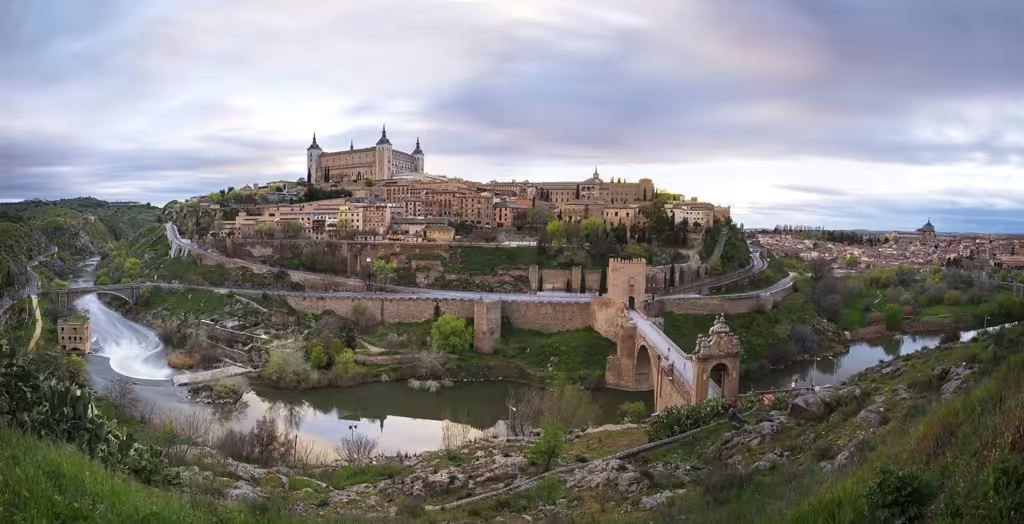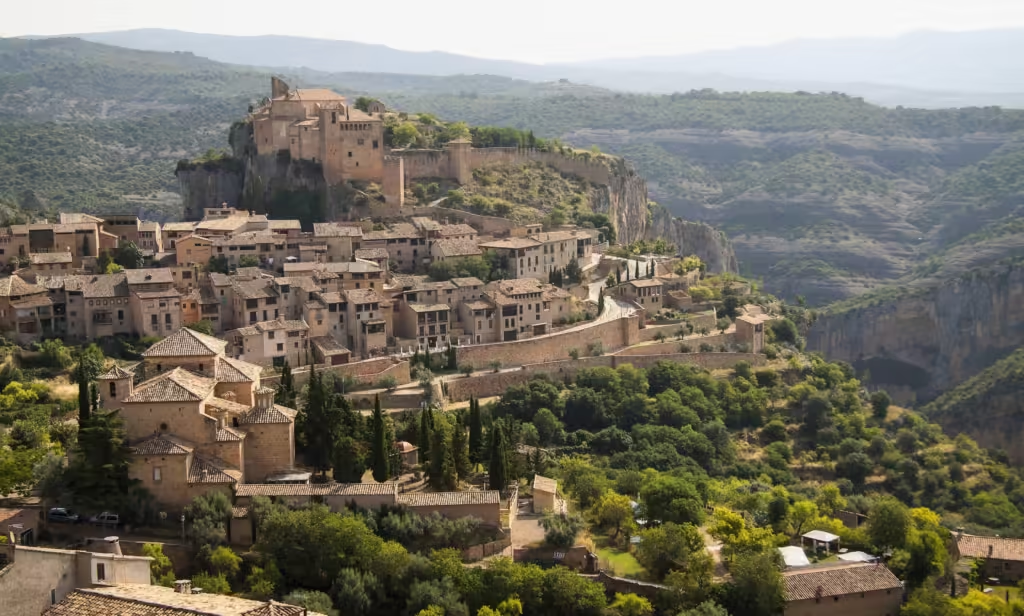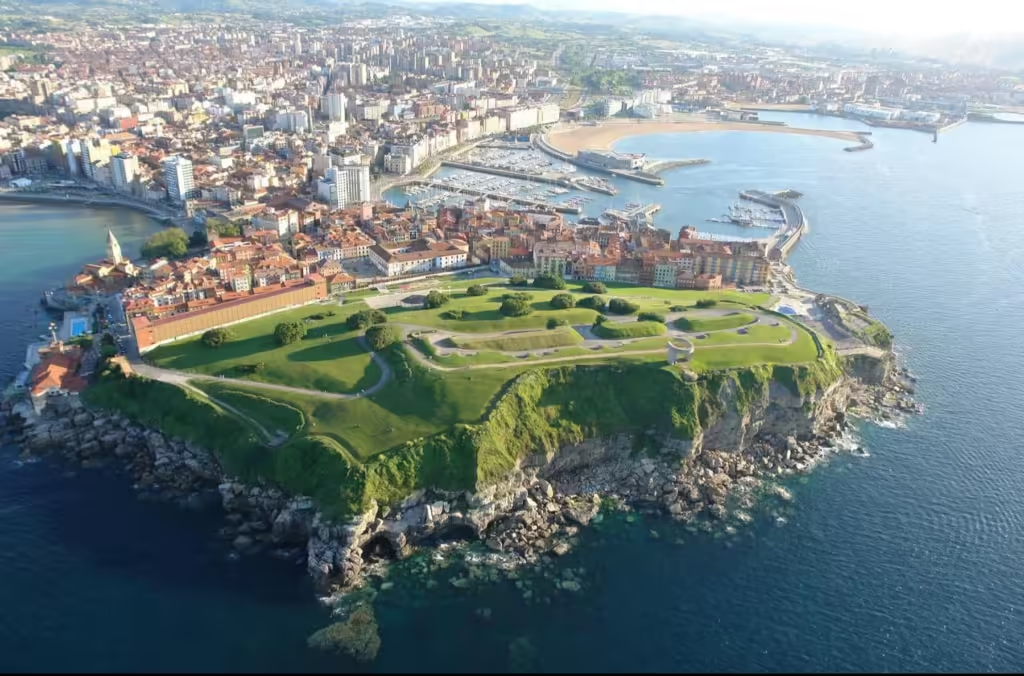Castilla-La Mancha, a region rich in history, culture, and natural beauty, lies in the heart of Spain. Home to the famous windmills of Don Quixote, medieval towns, and breathtaking landscapes, Castilla-La Mancha is a treasure trove waiting to be explored. Whether you’re seeking historical adventures, culinary experiences, or serene landscapes, Castilla-La Mancha has something for everyone. In this ultimate tourist guide, we’ll take a journey through this captivating region and offer all the information you need for a memorable visit.

Exploring Castilla-La Mancha: Top Attractions and Destinations
1. Toledo: The City of Three Cultures
Toledo, often referred to as the “City of Three Cultures,” is a UNESCO World Heritage site and a must-visit destination in Castilla-La Mancha. This enchanting city offers a blend of Christian, Muslim, and Jewish influences that are evident in its architecture, traditions, and culture.
What to See in Toledo
Alcázar of Toledo: This imposing fortress, now a military museum, offers panoramic views of the city and is an architectural highlight.
Toledo Cathedral: One of Spain’s most impressive Gothic cathedrals, the Toledo Cathedral features breathtaking stained glass windows, religious artworks, and intricate carvings.
Synagogue of Santa María la Blanca: Originally a synagogue, this beautiful building reflects the multicultural heritage of Toledo with its striking white arches.
2. Windmills of Consuegra: Follow Don Quixote’s Footsteps
The iconic windmills of Consuegra are synonymous with Castilla-La Mancha and were immortalized in Cervantes’ novel Don Quixote. These windmills, perched on the Cerro Calderico ridge, offer a glimpse into Spain’s literary past while providing stunning views of the surrounding countryside.
Best Time to Visit Consuegra Windmills
The windmills are particularly beautiful during sunset, as the soft light casts a golden glow over the landscape. August is also an ideal month to visit, as Consuegra hosts the annual Rosa del Azafrán Festival.
3. Cuenca: The City of Hanging Houses
Cuenca is another UNESCO World Heritage site, known for its spectacular hanging houses (Casas Colgadas) perched precariously over the Huécar River gorge. Cuenca also boasts medieval streets, charming squares, and an impressive cathedral.
Top Activities in Cuenca
Explore the Hanging Houses: These unique structures provide breathtaking views and house art museums.
Cuenca Cathedral: With its unique Gothic façade, the cathedral is a must-see for history lovers.
Museum of Abstract Art: Located in one of the hanging houses, this museum offers a contrast between modern art and historical architecture.
4. Albacete: Gastronomy and Culture
Albacete, the largest city in Castilla-La Mancha, is known for its culinary delights, traditional festivals, and vibrant nightlife. The city’s Cutlery Museum and Pasaje de Lodares, a unique covered shopping street, are popular attractions.
Gastronomic Highlights
Miguelitos: A local dessert made with flaky pastry and cream, originating in the town of La Roda.
Manchego Cheese: Sample authentic Manchego cheese at local markets and restaurants, a staple of the region’s cuisine.
5. Alcázar de San Juan: The Heart of La Mancha
Alcázar de San Juan is famous for its historical landmarks and ties to Cervantes. The Torreón de Don Juan de Austria and the Church of Santa María are must-visit sites for history buffs.
Wine Tourism
The region is known for its La Mancha Wine Route, where visitors can tour local wineries and vineyards. Sampling wines from the largest wine-producing area in the world is an experience not to be missed.
Things to Do in Castilla-La Mancha
1. Take a Don Quixote Route Tour
Follow the footsteps of Spain’s most beloved literary character by taking a Don Quixote Route tour. This journey will take you through the landscapes described by Cervantes, including the windmills, medieval castles, and picturesque villages that inspired the novel.
2. Visit Natural Parks and Hiking Trails
Castilla-La Mancha boasts numerous natural parks and hiking trails that showcase the region’s natural beauty.
Best Natural Parks to Visit
Tablas de Daimiel National Park: A wetland teeming with birdlife, ideal for nature enthusiasts.
Lagunas de Ruidera Natural Park: A series of beautiful turquoise lakes where visitors can swim, hike, or kayak.
Cabañeros National Park: Known as the “Spanish Serengeti,” this park is home to diverse flora and fauna, including deer, wild boar, and a variety of bird species.
3. Indulge in Local Gastronomy
The cuisine of Castilla-La Mancha is a reflection of its rural roots, featuring hearty stews, succulent meats, and flavorful cheeses. Don’t miss:
Pisto Manchego: A delicious mix of tomatoes, peppers, onions, and zucchini, similar to ratatouille.
Gachas Manchegas: A traditional dish made with flour, garlic, and pancetta, popular among hunters.
Manchego Cheese: A staple in the region, this sheep’s milk cheese is one of Spain’s most famous products.
Where to Stay in Castilla-La Mancha
Castilla-La Mancha offers a wide range of accommodations, from luxurious paradores (historic buildings converted into hotels) to charming rural houses and budget-friendly hostels. Some recommended places to stay include:
Parador de Toledo: A luxury hotel with views of Toledo’s old town.
Hospedería Ballesteros: A charming rural house in Cuenca, perfect for a countryside retreat.
How to Get Around Castilla-La Mancha
The best way to explore Castilla-La Mancha is by car, as it provides flexibility to visit remote towns and natural parks. The region is well-connected by highways, and renting a car is a convenient option. Alternatively, trains and buses connect major cities like Toledo, Cuenca, and Albacete.
FAQs About Visiting Castilla-La Mancha
1. What is the Best Time to Visit Castilla-La Mancha?
The best time to visit Castilla-La Mancha is during spring (April to June) and autumn (September to November) when the weather is pleasant, and the landscapes are lush. Summers can be quite hot, especially in the interior regions.
2. How Many Days Should I Spend in Castilla-La Mancha?
A minimum of 5 days is recommended to explore the highlights of Castilla-La Mancha, including Toledo, Cuenca, and the windmills of Consuegra. If you have more time, consider spending a week to fully immerse yourself in the culture, cuisine, and natural beauty of the region.
3. Is Castilla-La Mancha Worth Visiting?
Absolutely! Castilla-La Mancha is rich in history, culture, and scenic beauty. From exploring the medieval streets of Toledo and Cuenca to visiting the iconic windmills of Consuegra and tasting authentic Manchego cheese, there are endless experiences to enjoy.
4. What Are the Top Dishes to Try in Castilla-La Mancha?
Some of the top dishes to try include Pisto Manchego, Gachas Manchegas, and Miguelitos. Also, make sure to sample Manchego cheese and wines from the La Mancha Wine Route.
5. Are There Any Guided Tours in Castilla-La Mancha?
Yes, there are numerous guided tours available, including walking tours in Toledo, wine tours in La Mancha, and Don Quixote-themed excursions. Hiring a guide can help you better understand the history and culture of the region.
Conclusion
Castilla-La Mancha is a diverse and fascinating region that offers visitors a mix of history, culture, nature, and cuisine. From the historic streets of Toledo and Cuenca to the literary landscapes of Consuegra and the culinary delights of Albacete, there is something for every type of traveler. Whether you’re a history buff, a nature enthusiast, or a food lover, Castilla-La Mancha will captivate your senses and leave you with unforgettable memories.

